Archive
Vexatious Litigation (Prevention) Act dismissed and judges were called inefficent :))
*1* appln.3397.03.sxw
kps
IN THE HIGH COURT OF JUDICATURE AT BOMBAY
CRIMINAL APPELLATE JURISDICTION
CRIMINAL APPLICATION NO.3397 OF 2003
Mr.Goolam E. Vahanvati, )
Advocate General for )
the State of Maharashtra, )
having his office at Annexe Bldg., )
High Court, Mumbai400032. ) ..Petitioner Versus
Mr.Anil Gulabrai Gidwani, )
Age about 43 years, )
Indian Inhabitant, )
R/a. Ganga Bhavan, )
24th Road, Plot 459, Flat No.10, )
T.P.S.III, Bandra (W), )
Mumbai400050. ) ..Respondent ………..
Mr.H.J.Dedhia, Additional Public Prosecutor, for the Petitioner. The Respondent appears in person.
……….
CORAM : B.H.MARLAPALLE &
A.M.THIPSAY, JJ.
Reserved on : 25th March, 2011.
Pronounced on : 06th May, 2011.
JUDGMENT (Per A.M.Thipsay, J):
1 This is a petition filed by the Advocate General for the State of Maharashtra under Section 2(1) of the Maharashtra Vexatious Litigation (Prevention) Act, 1971, praying that the Respondent be *2* appln.3397.03.sxw
declared as a vexatious litigant and that he be restrained by an order of this Court from initiating any fresh proceedings against one Smt.Shanta Mhatre (mentioned as “the victim lady” in the petition) and from initiating any further application in any pending matters, without seeking prior permission of this Court.
2 This petition is based on the information received by the Petitioner from the said Smt.Shanta Mhatre (hereinafter referred to as “the victim lady”) that the victim lady is being continuously harassed by the Respondent who is habitually and without any reasonable ground, instituting various vexatious proceedings, civil as well as criminal, against her. The petition in paragraph No.1 itself gives the details of the proceedings initiated by the Respondent against the victim lady. The petition states on the basis of the information received by the Petitioner from the victim lady that the Respondent has been in the habit of using filthy language, making false, baseless and serious allegations against the Judges of the Small Causes Court, Mumbai where an ejectment suit filed by the Respondent against the victim lady is pending. The Respondent is the landlord and the victim lady is his tenant. It is also stated in the petition that in the pending suit between the parties, the Respondent has been continuously filing the applications after applications and has, in the course of argument levelled false, baseless and frivolous allegations against the victim lady using most abusive language against her. The Respondent has not only threatened *3* appln.3397.03.sxw the Judges of the Small Causes Court, Mumbai but has also cast aspersions on the judiciary by making certain statements before the learned Additional Chief Metropolitan Magistrate, 9th Court, Bandra about “inefficiency of the judicial system” and “leniency shown by the Magistrate towards criminals”. It is also stated that inspite of specific warning given by the learned Magistrate, the Respondent continued to make unwarranted statements and therefore, the Magistrate was required to warn him in open Court and by passing an order on 16.01.2003. The petition also states that the victim lady, who is an Advocate, was constrained to give up her practice, having been required to attend the various civil as well as criminal matters filed by the Respondent and due to unnecessary litigations filed against her by the Respondent. The petition also states, that with object of causing undue harassment and humiliating the victim lady, the Respondent has been referring to the victim lady by her earlier name which the victim lady has got changed. The Respondent also filed a false complaint against the victim lady with the Bar Council, which was dismissed. The Respondent has been filing the proceedings against the victim lady with malicious intention and that the applications which he files are false and frivolous. The petition also gives certain details of the proceedings between the Respondent and the victim lady. The petition gives several instances of misbehaviour of the Respondent with the victim lady and consequent harassment caused by the Respondent to the victim lady. After giving these details, the petition states that the Respondent has habitually and *4* appln.3397.03.sxw
without any reasonable ground instituted the vexatious proceedings, civil and criminal, in the Small Causes Court, the City Civil Court and Criminal Courts.
3 The petition has been opposed by the Respondent by filing a written reply. The Respondent has denied that he is, habitually and without any reasonable ground, initiating various vexatious proceedings against the victim lady. While denying the averments in the petition to the effect that the Respondent has cast aspersions on the judiciary, the Respondent has stated that “judiciary is perceived as inefficient by most citizens in India” and that “pointing this out is not casting aspersion”; and the Respondent has claimed that the same would be fair and valid criticism which has been allowed under the Constitution of India. The Respondent has undertaken to stand by and prove his statement. The Respondent has denied the allegations levelled against him and has advanced his own version with respect to alleged incidents or happenings. Ultimately, the Respondent submits that none of the proceedings initiated against the victim lady are false. According to him, seeking a legal remedy to counter the continuous violations of the provisions of the Rent Act and the terms and conditions of the tenancy agreement on the part of the victim lady, is a valuable right vested in the Respondent by the Constitution of India and cannot be lightly taken away. The Respondent, thus, prays for dismissal of the petition. *5* appln.3397.03.sxw 4 We have heard Mr.H.J.Dedhia, the learned Additional Public Prosecutor appearing for the State in support of the petition. We also permitted the victim lady to make oral submissions before us. We have heard the Respondent who appears in person.
5 The Maharashtra Vexatious Litigation (Prevention) Act, 1971 (hereinafter referred to as the Act) has been enacted to prevent the institution or continuance of the vexatious proceedings in courts. Section 2(1) of the Act reads thus:
“2. (1) If, on an application made by the Advocate General, the High Court is satisfied that any person has habitually and without any reasonable ground instituted vexatious proceedings, civil or criminal, in any Court or Courts, whether against the same person or against different persons, the High Court may, after hearing that person or giving him an opportunity of being heard, order that no proceedings, civil or criminal, shall be instituted by him in any Court (and that any legal proceedings instituted by him in any Court before the order shall not be continued by him), (a) In Greater Bombay, without the leave of the High Court; and
(b) elsewhere in the State, without the leave of the District and Sessions Judge.
At the hearing of any such application, the Advocate General may appear through a pleader.”
6 Section 3 of the Act provides that any proceeding instituted or continued in any Court by a person against whom an order under sub section (1) of Section 2 has been made without obtaining the leave referred to in that section, shall be dismissed by the Court. Section 4 *6* appln.3397.03.sxw thereof saves the applicability of the provisions of any other law for prevention of the vexatious proceedings or other abuse of legal process or necessity of consent, sanction or approval in any form of any other authority for institution or continuance of any proceeding, and makes it clear that the provisions of the Act shall be in addition to and not in derogation of the provisions of such other law.
7 It is clear that an order under subsection (1) of Section 2 of the Act can be passed by the High Court if it is satisfied that any person has habitually and without any reasonable ground instituted vexatious proceedings, civil or criminal, in any Court or Courts. Thus, what must be established before an order under subsection (1) of Section 2 of the Act is passed is that (a) a person has instituted the vexatious proceedings in the Court or Courts and (b) that such person has instituted such proceedings (i) habitually and (ii) without any reasonable ground. The Act, however, does not define the term “vexatious” or “vexatious proceedings”.
8 In common parlance, “To vex” means anger by a slight or a petty annoyance; irritate. “Vexation” means the act or an instance of vexing or annoying or distressing thing. “Vexatious” means such as to cause vexation. (See The Oxford English Reference Dictionary, Edition1995). The term “vexatious”, when used in law, signifies an action not having sufficient ground therefor and seeking only to annoy *7* appln.3397.03.sxw the adversary.
9 The Advanced Law Lexicon, 3rd Edition Reprint 2007, defines the term “Vexation” as under:
“The action of troubling or harassing by aggression or interference; the action of troubling or irritating by physical means.”
“Vexatious” has been defined as causing or likely to cause vexation. The “vexatious action” or “vexatious proceedings” has been defined as under:
“An action brought for the purpose of annoying the opponent and with no reasonable prospect of success.” 10 Black’s Law Dictionary, Eighth Edition, defines the words “vex”, “vexation”, “vexatious”, “vexatious litigant” and “vexatious proceeding” as under:
(a) Vex : to harass, disquiet, or annoy.
(b) Vexation : The damage that is suffered as a result of another’s trickery or malice.
(c) Vexatious : (Of conduct) without reasonable or probable cause or excuse; harassing; annoying.
(d) Vexatious litigant : A litigant who repeatedly files frivolous lawsuits.
(e) Vexatious proceeding : A lawsuit instituted maliciously and without good cause.
11 We have carefully gone through the petition to ascertain the *8* appln.3397.03.sxw
number, details and other particulars of the proceedings which have been initiated by the Respondent. These details are found in PartA of the petition which speaks of “brief background” and also in PartB of the petition which has been classified as “facts of the case”. Now, in PartA, there is mention of criminal case No.608/S/2001 filed by the Respondent against the victim lady and her husband. It is also stated that prior to the filing of the said case, the Respondent had also filed several complaints against the victim lady, the details of which are as follows:
1) N.C. Complaint at the Nirmal Nagar Police Station, Bandra (East) being N.C. Complaint No.4831/2000, filed on 20.11.2000.
2) Complaint filed against the victim lady at the Khar Police Station, Mumbai dated 15.11.2000.
3) Complaint dated 21.09.2000 filed at Khar Police Station, Mumbai.
4) Complaint filed against the victim lady at Khar Police Station, Mumbai dated 24.04.2000.
5) Complaint filed against the victim lady at Khar Police Station, Mumbai dated 30.07.1999.
6) Complaint filed with the Commissioner of Police regarding criminal intimidation dated 08.01.2001.
7) Criminal Appeal No.300/2000 filed by the Respondent against the order passed by the Special Executive *9* appln.3397.03.sxw
Magistrate, Bandra, West Division, Mumbai.
8) Criminal Complaint No.610/S/2002 filed by the Respondent against the victim lady under Sections 506, 504, 352, 268, 447, 107, 427 r/w 34 of the Indian Penal Code.
12 Now, in our opinion, the complaints mentioned at Sr.No.1 to 6 above would not come within the purview of the Act. It is clear that the Act seeks to prevent the institution or continuance of the vexatious proceedings in Courts. Section 2 of the Act also refers to the institution of the vexatious proceedings in any Court or Courts. Thus, the complaints made to the various Police authorities cannot be termed as “vexatious proceedings” within the meaning of the Act. 13 The matter at Sr.No.7 above, namely, Criminal Appeal No. 300/2000, cannot be termed as “vexatious proceedings” inasmuch as the Respondent had filed the same for challenging the order passed by the Special Executive Magistrate requiring the Respondent to execute a bond for good behaviour. The Respondent had a right to challenge the said order by approaching the higher court. The proceedings instituted by the Respondent for challenging an adverse order passed against him, can, by no stretch of imagination, be considered as “vexatious proceedings”. It is also significant that the Respondent succeeded in the said appeal and the Court of Sessions set aside the order passed by the Special *10* appln.3397.03.sxw Executive Magistrate.
14 So far as the Criminal Complaint No.610/S/2002 appearing at Sr.No.8 above is concerned, the same indeed requires to be taken into consideration for deciding whether the Respondent has habitually and without any reasonable ground instituted the vexatious proceedings. The petition, however, instead of highlighting as to how the said complaint is either false, frivolous or vexatious, deals more with the conduct of the Respondent in the course of hearing of the complaint. It is stated that the Respondent is in the habit of using filthy language and making false, baseless and serious allegations against the Judges of the Small Causes Court. It is stated that the Respondent also levelled false, baseless and frivolous allegations against the victim lady and used most abusive language against her. It is stated that the Respondent has cast aspersions on the judiciary by making serious statements before the learned Additional Chief Metropolitan Magistrate, Bandra. It is also mentioned that the Respondent was warned by the learned Magistrate, thrice, orally, and thereafter, by passing an order; and that while the order was being dictated the Respondent submitted an apology. Indeed, it appears from the order dated 16.03.2003 passed by the learned Additional Chief Metropolitan Magistrate, 9th Court, Bandra that the Respondent had behaved in an improper manner in the Court and had started arguing about inefficiency of the judicial system. It may be observed, at this stage, that the Respondent seems to be in the habit of speaking about the *11* appln.3397.03.sxw inefficiency of the judicial system, inasmuch as, not only he has made remarks about inefficiency of the judicial system in his reply to the petition, but the record shows that in the course of hearing of this petition itself, he has attempted to teach the Hon’ble Judges of this Court as to how they are supposed to do their job.
15 The Petition also refers to the order dated 07.01.2003 passed by the Court of Small Causes, Mumbai in Interim Notice No. 7/2003 in RAE Suit No.3000/838/1994. The Respondent is the Plaintiff No.2(d) in the said suit and the victim lady is the Defendant. Copy of the order, which has been annexed to the petition at ExhibitD, indicates that the Court of Small Causes ordered to strike out certain portion contained in the Respondent’s affidavit in reply dated 13.12.2002, under the provisions of OrderVI Rule16 of the Code of Civil Procedure. Thus, this prima facie indicates that the Respondent had resorted to scandalous and unnecessary averments in his affidavit in reply. 16 The petition then refers to a complaint filed by the Respondent against the victim lady with the Bar Council. In our opinion, the Bar Council cannot be termed as a “Court” and therefore, the proceedings filed by the Respondent against the victim lady with the Bar Council would be outside the purview of the Act and therefore, cannot be taken into consideration. Undoubtedly, the conduct of the Respondent insofar as it appears from the filing of the said proceedings may be taken *12* appln.3397.03.sxw into consideration while deciding the propriety of treating him as a vexatious litigant, but this complaint made by him to the Bar Council cannot be added to the list for showing the number of alleged vexatious proceedings initiated by him.
17 The petition then refers to the threatening language used by the Respondent to the Judge of the Court of Small Causes. An incident which has taken place in Revision Application No.16/2002 pending in the Court of Small Causes has been cited and a copy of the order passed by the Court of Small Causes has been annexed to the petition as ExhibitF. It is not clear, as to what is sought to be conveyed by referring to the said order except that the Respondent threatened or used improper language while addressing the learned Judge of the Small Causes Court.
18 Now, coming to the details given in partB of the petition classified as “facts of the case”, there is reference of the suit bearing RAE No.537/4434/63, but this suit has, admittedly, not been filed by the Respondent and apparently the same has been filed by the grandfather of the Respondent. Reference to an order dated 03.05.2003 passed by the Court of Small Causes has been made and a copy of the said order has been annexed to the petition as ExhibitH. A perusal of ExhibitH shows that it is an order passed in RAE Suit No.300/838/1994 in which the Respondent is one of the Plaintiffs and the victim lady is the *13* appln.3397.03.sxw
Defendant. By the said order, the suit filed by the Plaintiffs was dismissed. It is clear from the averments in the petition itself that the legal proceedings are pending between the parties since the year 1963. The petition itself states, that the victim lady had been suffering at the hands of the grandfather of the Respondent since 1961 and thereafter, at the hands of the father of the Respondent, who both were landlords of the victim lady. It is only subsequently that the Respondent has come on record as one of the landlord.
19 The petition then states that the Respondent has been initiating the legal proceedings by filing unnecessary, false and frivolous litigation and that he makes various applications in the legal proceedings and does not even spare the judicial officers etc.. In our opinion, if the Respondent has stepped in the shoes of his grandfather and father in his capacity as the landlord, and is continuing the suits filed by them, it cannot be said that the Respondent has initiated or instituted those suits. The petition then proposes to give history of the suit bearing RAE No. 537/4434/63 filed by the grandfather of the Respondent, and it is clear therefrom, that the Respondent came in picture in the year 1998 only. It seems that he was earlier in U.S.A. and after coming down from there, he started taking interest in the litigation which was already pending between the landlords and the victim lady.
20 The petition then narrates the instances of objectionable *14* appln.3397.03.sxw conduct of the Respondent such as filing the complaint with the Bar Council, sitting right under the window of the victim lady’s house from morning to evening and making her uncomfortable by peeping inside the house, etc.. It is alleged that the Respondent, on the pretext of reading books and doing meditation, continues to sit near the window of the victim lady reading law books and passing unwanted remarks stating that he will become a better lawyer by reading law books and will teach the victim lady a lesson. The Respondent is also alleged to have killed the kitten to whom the victim lady regularly used to feed. He is also alleged to have called three men to remove coconuts from the coconut tree and in the process broke number of flower pots belonging to the victim lady and destroyed the garden maintained by her. The victim lady also suspects that the attempt of robbery, that was committed on 04.01.2000 at the flat of the victim lady, was at the instance of the Respondent.
21 An incident dated 20.01.2000 is also quoted in the petition. The Respondent, when he attended the office of the Advocate for the victim lady, fought with the said Advocate and embarrassed him in front of his other clients, due to which, the Advocate refused to represent the victim lady who was, therefore, constrained to engage another Advocate, putting her to unnecessary harassment, financial burden and mental agony. In our opinion, the objectionable conduct of the Respondent, as alleged, and the harassment caused by him to the victim lady, by various *15* appln.3397.03.sxw methods as referred to above, is not relevant in the context of the provisions of the Act. The Act intends to prevent only the harassment as would be caused by instituting vexatious proceedings, and not other forms of harassment, for which appropriate legal action can be taken by the aggrieved person.
22 The petition then refers to a suit bearing L.C. Suit No. 157/2001 filed by the victim lady against the Municipal Corporation of Greater Bombay and others challenging the notice under Section 53(1) of the M.R.T.P. Act issued by the Municipal Corporation to the victim lady. Apparently, the Respondent who was the Defendant No.3 in the said suit had taken out the Notice of Motion No.3785/2001 praying for various reliefs including that certain copies of the affidavits filed in the same proceedings be made available to him, that the criminal complaint should be lodged against the Plaintiff i.e. victim lady, that the criminal complaints be also lodged against the persons named as Respondents in the said motion, etc.. The said Notice of Motion was dismissed as not tenable and it was observed by the learned Judge, City Civil Court, Mumbai that the Respondent had moved the Notice of Motion to pressurize the Plaintiff i.e. victim lady for ulterior motive. The learned Judge also observed that the Respondent wanted to harass the victim lady by hook or crook by filing such frivolous motion. The petition also states that the Respondent had filed a perjury application against the victim lady in L.C. Suit No.157/2001 in the City Civil Court and the *16* appln.3397.03.sxw learned Judge who dealt with the matter observed that the application had been filed with a view to harass the victim lady and other persons. 23 The petition then states, that on every date in the matter in the Small Causes Court, the Respondent misbehaved with the victim lady by instructing the Court clerk to call the victim lady by previous name i.e. Shanta Wadhva instead of calling her by changed name i.e. Shanta Mhatre, that he insists on keeping back the matter etc. with a view to cause harassment to the Court as well as the victim lady. There is a reference to the applications filed by the Respondent in the Court of Small Causes praying the action for contempt should be taken against the victim lady, which applications were dismissed by the Court. 24 The petition then refers to the Criminal Case No.608/2001 filed by the Respondent against the victim lady and her husband under the provisions of the Maharashtra (Urban Areas) Preservation of Trees Act, 1975 (wrongly referred as the Urban Land Development of Trees Act, 1975 in the petition) and Section 435 r/w 34 of the Indian Penal Code. The petition then refers to the Criminal Case No.610/2001 filed by the Respondent against the victim lady for the offences punishable under Sections 352, 268, 425 r/w 34 of the Indian Penal Code. 25 Lastly, the petition purports to give the list of all cases filed by the Respondent against the victim lady pending in various Court as *17* appln.3397.03.sxw Exhibit M to the petition. However, ExhibitM to the petition consists of some other documents, though a list of such cases is found annexed to the petition, perhaps, as a part of ExhibitM. Only four matters are mentioned in the said list which are as follows:
(1) Criminal Complaint No.608/S/2001 filed in the Court of the Additional Chief Metropolitan Magistrate, 9th Court, Bandra under Section 8 r/w 21(1) of the Maharashtra (Urban Areas) Preservation of Trees Act, 1975 and Section 435 r/w 34 of the Indian Penal Code.
(2) Criminal Complaint No.610/S/2002 filed in the Court of the Additional Chief Metropolitan Magistrate, 9th Court, Bandra under Sections 506, 504, 353, 268, 447, 107, 427 r/w 34 of the Indian Penal Code.
(3) R.A.E. Suit No.300/838/1994 filed in the Court of Small Causes Court, Bandra.
(4) Chamber Summons No.307/2003 for restoration of L.C. Suit No.2146/2001, in the City Civil Court.
26 It can be seen that R.A.E. Suit No.300/838/1994 mentioned at Sr.No.3 above, had not been filed by the Respondent alone and the same was dismissed on 03.05.2003. Apparently, the same has been restored. Who has taken out the Chamber Summons No.307/2003 mentioned at Sr.No.4 above, is not clear, as the same appears to be for *18* appln.3397.03.sxw
restoration of the victim lady’s suit being L.C. Suit No.2146/2001 in the City Civil Court.
27 Though a number of proceedings are pending between the Respondent and the victim lady, it, however, does not appear that all these proceedings have been filed by the Respondent. The relationship between the parties is that of the landlord and tenant and the original landlords had filed the proceedings under the Rent Act against the victim lady which proceedings have been continued by the Respondent as one of the heirs and legal representatives of the original landlords. On careful examination of the proceedings, there appears to be reference to only two suits one filed in the year 1963 and other filed in the year 19994 and admittedly, none of these suits have been filed by the Respondent. The details of the suits or the issues involved therein have not been mentioned in the petition. No arguments were advanced with respect to these suits to show that no relief is actually expected by the Plaintiffs, but the object of continuance of the said suits is only to harass or annoy the victim lady.
28 Reading of the petition, gives a clear impression to us that what has been highlighted is not the initiation of the proceedings without any reasonable ground, without any genuine grievance and without any intention or hope of ultimately succeeding or getting any relief. What has been highlighted, instead, is the conduct of the Respondent in prosecuting *19* appln.3397.03.sxw the proceedings. The emphasis in the petition is on the conduct of the Respondent in the course of the proceedings which are being conducted by him as a party in person. The emphasis is on how the Respondent makes allegation against the learned Judges, how he insults the victim lady in the course of those proceedings etc.. The emphasis is more on the conduct of the Respondent with the Judges, causing annoyance to the Judges.
29 Indeed, we find the conduct of the Respondent as reflected from the record is quite objectionable. It may be recalled that even while defending the present petition, the Respondent, in his affidavitinreply, stated that “the judiciary is perceived as inefficient by most citizens of India” as a justification for what he had stated against the judiciary and to claim that making such remarks does not amount to casting aspersions on the judiciary. The Respondent may be free to express his views about the judiciary, but obviously had no right to project his views as of “most citizens in India”. What survey or research has been made by the Respondent to ascertain the views of “most citizens in India”, has not been disclosed, and considering the number of the citizens in India it is impossible to believe that the Respondent has made any survey or research on these aspects, so as to be able to make an authoritative statement of what “most citizens” feel. The impropriety is so obvious that we do not wish to comment upon the same any further, except observing that this shows the tendency of the Respondent to make certain baseless *20* appln.3397.03.sxw statements, projecting them to be well studied, scholarly and authoritative. The Respondent had no business to throw the weight of the alleged perception of most citizens of India about inefficiency of the judiciary, so as to support his own perception if he really and truly has one in that regard. We also find that the Respondent, on one occasion, attempted to teach the senior Judges of this Court as to how they should do their job of judging and the occasion to do so, apparently arose because this matter was not being taken up by the learned Judges, being busy with the hearing of some other matters. It is also seen from the record, that the Respondent had filed an untenable and senseless application for initiation of “perjury proceedings” against Justice Bilal Nazki on the ground that certain statements in the order passed by Justice Bilal Nazki on 13.03.2009 in the present proceedings contained false statement. Obviously, the Respondent does not understand what is “evidence” and what constitutes offence of perjury i.e. giving false evidence.
30 The question, however, is whether the Respondent should be prevented from instituting any legal proceedings without the leave of this Court as contemplated under Section 2 of the Act. Merely because a party conducts himself in an improper manner during the course of any legal proceedings, it would not be proper to declare such a party as a “vexatious litigant” and to pass an order as contemplated under Section 2(1) of the Act against him. Passing an order under Section 2(1) of the *21* appln.3397.03.sxw
Act would put restriction on the rights of the party to initiate and/or institute the legal proceedings at his peril.
31 A party should ordinarily be allowed to initiate or institute any legal proceedings, at his peril. If a party conducts himself improperly during such proceedings, then there are various provisions in various statutes, which aim to control such improper and objectionable conduct of the party. The Contempt of Courts Act, 1971 provides, interalia, that any act which prejudices or obstructs or interferes, or tends to interfere, with the due course of any judicial proceedings, or administration of justice, would amount to criminal contempt which can be punished under the provisions of the Contempt of Courts Act, 1971. The cases of contempt contemplated by Section 228 of the Indian Penal Code can be dealt with summarily under the provisions of Section 345 of the Code of Criminal Procedure, apart from the normal procedure, which may consume some time.
32 OrderVI Rule16 of the Code of Civil Procedure empowers the Court to order striking out any matter in any pleading which the Court may think unnecessary, scandalous, frivolous or vexatious, or which may tend to prejudice, embarrass or delay the fair trial of the suit. Sections 151 and 512 of the Indian Evidence Act, empower the Court to forbid questions, which it regards as scandalous or indecent or which appear to the Court to be intended to insult or annoy or which appear to *22* appln.3397.03.sxw be needlessly offensive in form to be put to the witnesses or parties. Thus, the objectionable conduct with respect to the Presiding Officers/ Judges of the Courts and also with respect to any other person if the same would be intended to or have effect or tendency of obstructing the due course of judicial proceedings, can be properly dealt with by the Courts which undoubtedly have all powers to set things right. 33 The suit filed by a party which does not disclose any cause of action can be thrown out by the Court by rejecting the plaint. The complaint filed by a party before a Magistrate needs to be verified by the Magistrate by examining the Complainant on oath, and it is only on the satisfaction of the Magistrate about sufficiency of grounds for proceeding further, that the accused can be summoned to face the trial. Again, the Courts are empowered to award the costs and even compensation to the persons who are got groundlessly arrested or unnecessarily dragged to the Courts. All these provisions are designed to ensure a fair trial and proper determination of the disputes brought before the Courts of law. 34 In our opinion, simply because the conduct of the party to the litigation is objectionable and because the party has been causing annoyance to the Judges, by his incapacity to understand the Law and by his approach in the litigation, it would not be proper to invoke the powers under Section 2 of the Act, which according to us, should be exercised only in exceptional cases, where the various provisions *23* appln.3397.03.sxw discussed above, designed to ensure a fair trial and a fair adjudication of dispute in proper atmosphere, would prove to be ineffective. In this context, we hold the word “habitually” appearing in Section 2 of the Act to be significant. In our opinion, a number of proceedings which a party institutes must be unreasonable and sufficiently high so as to attract the provisions of the Act. In our opinion, even if other conditions mentioned in Section 2 of the Act are satisfied, the powers under the said section can be invoked only if a number of proceedings filed by the party is unreasonably high and if such conduct is persisted for sufficient span of time which is signified by the word “habitually”.
35 If we examine the present case from that angle, we find that there is mention of only four proceedings and the prayer clause (e) of the petition also speaks of the cases mentioned in ExhibitM. It may be recalled that the list of cases which forms a part of ExhibitM, is consisting only four cases, out of which, only two have been filed by the Respondent. The petition mentions about various complaints filed by the Respondent with the Police and Municipal authorities and one with the Bar Council. As already discussed above, these complaints to the authorities would not come within the purview of the proceedings contemplated by the Act. It may also be noted that a public servant to whom such complaints are filed, can take action against the Respondent in the event of coming to the conclusion that false complaints or false report have been made. In fact, the Respondent in such cases can also be *24* appln.3397.03.sxw prosecuted by the concerned public servants, apart from any other action, such as for defamation etc., which the aggrieved party may successfully bring.
36 We would like to sum up as follows:
(a) The Respondent, who appears as a party in person in various legal proceedings, has on several occasions caused annoyance to the Judges by his objectionable conduct.
(b) The Respondent probably because of his incapacity to understand the Law, has made certain unreasonable and contemptuous demands such as proceedings for perjury should be initiated against the learned Judge, claiming that a statement in the order passed by the Judge is false. Similarly, without understanding the concept of “verification” of the petition or pleading, the Respondent has tried to equate it with the finding or decision to be given about the correctness of the assertions made in such petition or pleading, without realizing that such a decision would be given by the Court and that concept of “verification” does not contemplate such decision or findings to be given by the party to the proceedings.
(c) The Respondent has claimed that the judiciary is *25* appln.3397.03.sxw inefficient, and the Respondent has tried to support his opinion by claiming that “most citizens of India” hold such an opinion about the judiciary, without giving any basis for such claim and without explaining whether, and in what manner any survey or research on this point was done by the Respondent. Thus, apparently the Respondent has attempted to throw the weight of opinion of “most citizens of India” in order to pressurize or cause embarrassment to the Judges dealing with the petition and this attempt does not appear to be bonafide.
(d) The Respondent has even attempted to teach the senior Judges of this Court as to how they should do their job of judging.
(e) The Respondent has also behaved in an objectionable and threatening manner with the Judges of Courts of Small Causes, City Civil and Metropolitan Magistrate. (Which is not surprising in view of the opinion which he holds about the judiciary and which he falsely claims to be the opinion of “most citizens of India”.)
(f) Though the Respondent has filed a number of complaints against the victim lady with the Police and Municipal authorities, these complaints cannot be considered as legal proceedings as contemplated *26* appln.3397.03.sxw under Section 2 of the Act which speaks of the proceedings in Court or Courts. Similarly, the complaint filed with the Bar Council would be outside the purview of the provisions of Section 2 of the Act. (g) The petition does not concentrate on giving the details of the nature of the proceedings initiated by the Respondent, to show that they are vexatious, but attempts to highlight his improper and objectionable conduct with the victim lady and more particularly with the Judges hearing such cases. The Act intends to protect the parties against whom bogus and vexatious proceedings are or would be instituted and to prevent their harassment. For the conduct causing annoyance to the Judges, and attempts to browbeat the Judges, the powers conferred on this Court by Section 2 of the Act should not be invoked. The Judges and Courts have sufficient powers to tackle such conduct of a litigant and do not require the support of the Act, which is aimed at preventing the harassment of the parties to the litigation and for protecting them from vexatious proceedings.
(h) Once the complaints lodged with the Police, Municipal authorities and the Bar Council are excluded from consideration, the number of proceedings instituted *27* appln.3397.03.sxw by the Respondent cannot be considered as sufficiently high so as to hold that the Respondent has habitually instituted the proceedings as contemplated by Section 2 of the Act.
37 In our considered opinion, this is not a fit case where an order under Section 2(1) of the Act should be passed. As discussed above, there are sufficient, proper and effective provisions in law to control and regulate the objectionable conduct of the party to a legal proceedings and in view of such provisions, there would be no apprehension that there would not be a fair trial or adjudication of the disputes which are pending between the parties. At any rate, since the number of proceedings instituted in different Courts by the Respondent is not so high, we are unable to hold that the requirement conveyed by the word “habitually” used in Section 2(1) of the Act has been satisfied. We are, therefore, inclined to dismiss the petition. 38 The petition is dismissed.
(A.M.THIPSAY, J.) (B.H.MARLAPALLE, J.)


































































































































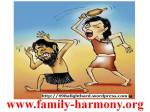




























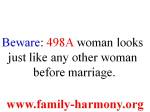



















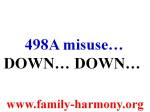


























































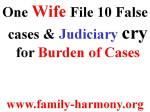



























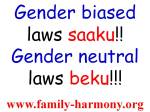





























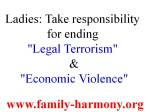














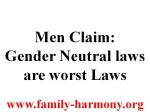









































Recent Comments